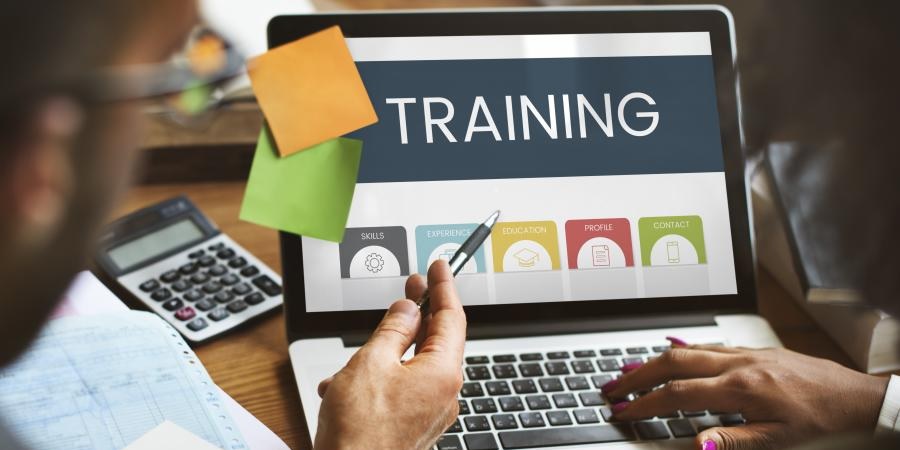The training business offers you no time to rest on your laurels. To be successful in the training industry, it is critical that you continuously evolve your strategies to meet the ever-changing needs of new and repeat customers alike.
One strategic approach that you should prioritize if you are not currently doing so is selling corporate training programs. The growing demand for corporate training programs is a significant opportunity for training providers to grow at scale. After all, one ongoing corporate client can reap rewards far beyond individual clients.
While selling your training directly to businesses can require different skills and strategies, it is important to remember that regardless of your target customer type, you are still selling to an individual at the end of the day.
Read on to learn a few pro tips on how to sell corporate training programs to different types of business clients. These efficient techniques can be incorporated into your sales strategy to save you time and increase revenue.
Sales Strategy Begins with Preparation
It’s important to have a process for corporate training sales. The first steps are to identify, prepare, and target corporate customers.
Identify Potential New Customers
Your goal is to identify new potential customers, and the best way to do this is to analyze your existing customers.
Look at who historically and currently purchases your training courses. Try to identify similar pain points and training needs. Determine the patterns and similarities among them and any nuanced differences for why your customers are purchasing the training from you specifically.
The next step is to find similar companies to target. They will likely share pain points or have the same training needs. Armed with knowledge from your existing customers, you can identify new ones. Explore beyond your immediate region too. Online training enables you to expand to businesses around the country.
Perhaps you can find corporate partners for your training that have not been tapped yet but share similar needs. Plan ahead to see how your current training might be modified or re-suited to meet new customer pain points. If you have an LMS that enables you to mix and match different learning modules from different courses, you can easily tailor existing content for new customers.
Prepare Your Training Content for the Pitch
The next step is to prepare your content for new customers. Once target companies are identified, there are steps that you can take to make your training more appealing to them. If you haven’t yet, consider using a training-company-focused LMS that enables your training programs to be branded by your corporate clients. Developing chunked materials also enables quick and easy content upgrading or tweaking based on individual client needs.
One proven way to increase your sales over time is to design tiered offerings. A best practice is to create multiple tiers offering different features for different corporate needs. Tiered pricing systems can increase service sales and revenue from customers over time. Many potential customers who try your entry tier would never have taken a chance on your training programs otherwise. Others will jump right in at a middle tier with more advanced features. Over time, as you build trusting relationships with your corporate clients, it becomes possible to upsell them to the deluxe tier. Basically, tiered systems enable you to cast a wider net.
Sell Convenience
Convenience sells. It can even trump quality and price in many cases. In the end, clients clamor for low maintenance and ease of use. A training-focused LMS is your best asset when it comes to convenience.
First, make sure your LMS gives your clients the option to embed your training program in their own LMS. With this ability, you get to host and control your content while simultaneously providing your clients with the flexibility to launch the content through their own system. Additionally, choose an LMS with Single Sign-On (SSO) so your corporate clients can simplify course access, including the login process. SSO means that corporate employees can log into training using their existing corporate credentials. You can also let your customers design and upload customized, corporate-branded certificates of completion for each course. You may want to consider spreading these conveniences across the different tiers to induce upselling.
Perhaps the greatest convenience that you can offer is a simple purchasing solution. The easier it is to buy something, the easier it is for you to make a sale. If possible, find an LMS that integrates directly with an ecommerce platform, like Shopify. This is key for B2B buyers who are looking to purchase courses for multiple learners in bulk. For example, a company manager can purchase multiple seats to a course from your Shopify store and assign them to each of their employees.
The Right LMS Makes Selling Corporate Training Programs Easier
Corporate training sales are different from B2C sales, but they aren’t rocket science. The sales process is made easier if you host your content using an LMS designed for corporate trainers. In the end, planning and offering convenience are how to sell corporate training programs.
Before you attempt to grow your business, make sure you have the right foundation on which to build, including an LMS that:
- Lets your corporate customers embed content in their own LMS or website as their own
- Provides convenient options, including SSO and branded certificates
- Offers a painless, quick online purchasing experience
Here at Firmwater, we don’t just sell an LMS for training providers. We partner with our clients, giving them the tools and insights they need to implement the best practices in e-learning course development, growth, and delivery. We care too much about our customers’ businesses to have them wade through forums and chatbots for help.
Ready to use an LMS that’s designed for the way YOU work, with a team dedicated to YOUR needs? Book a no-obligation consultation directly with our team today!


